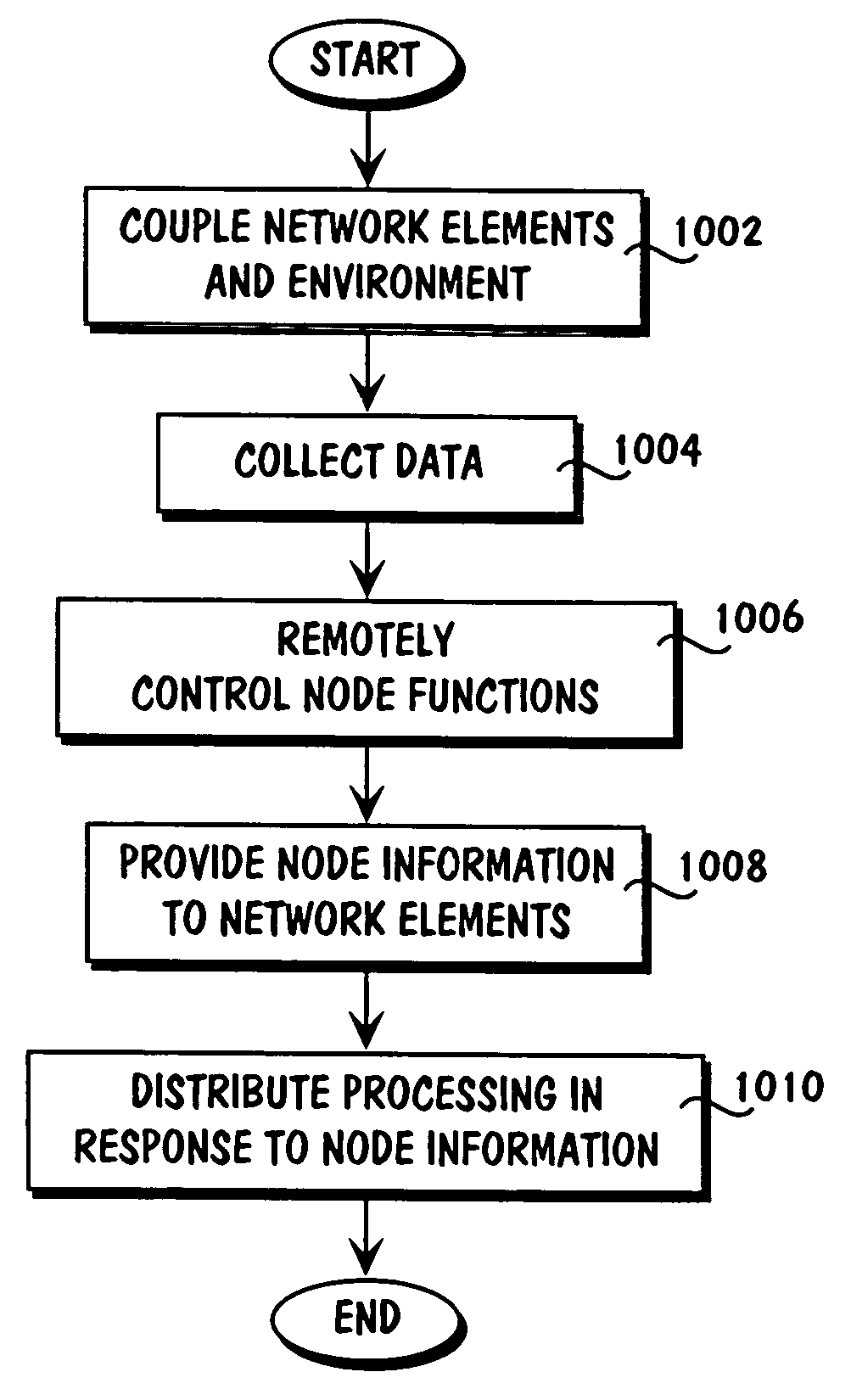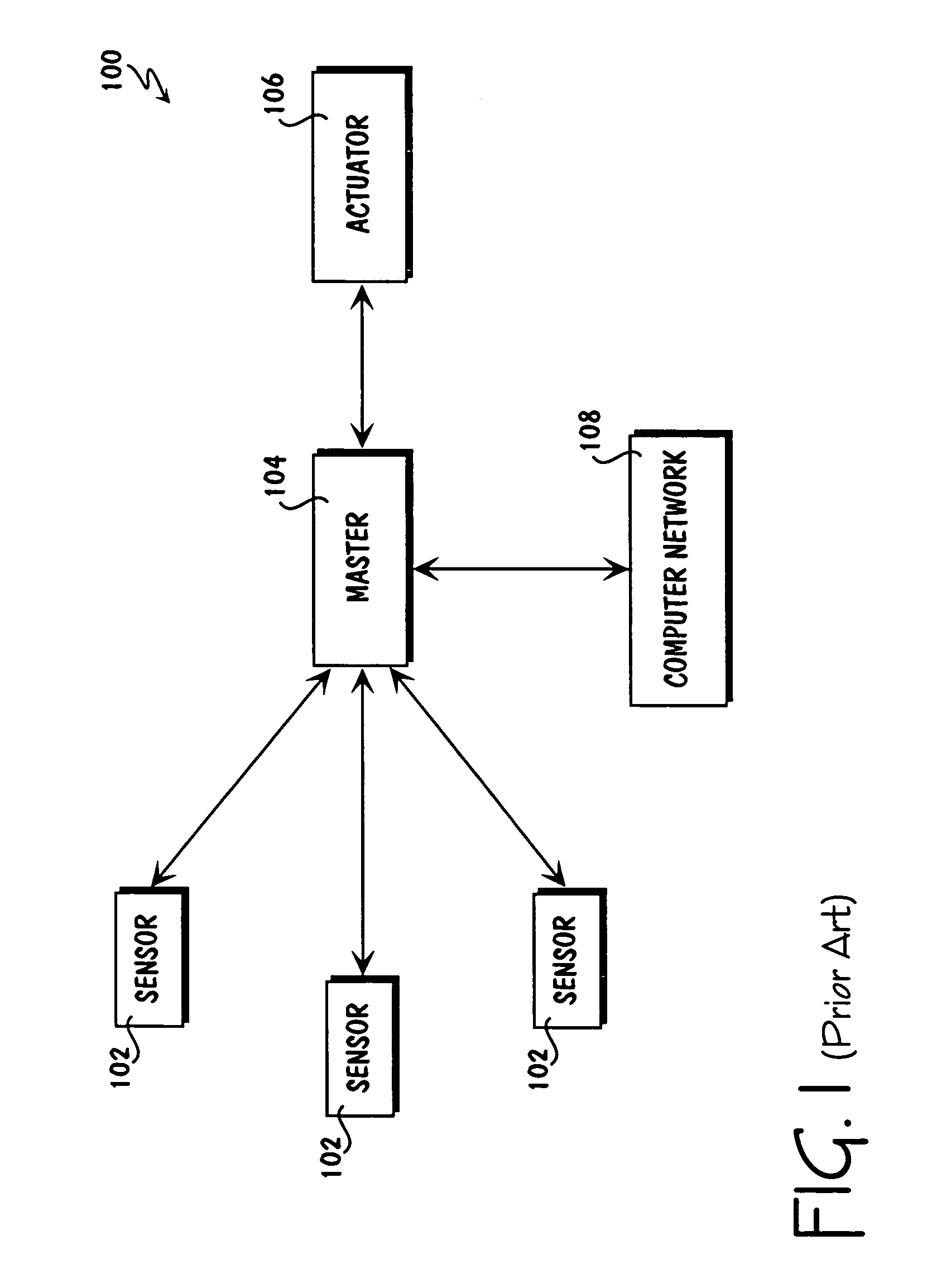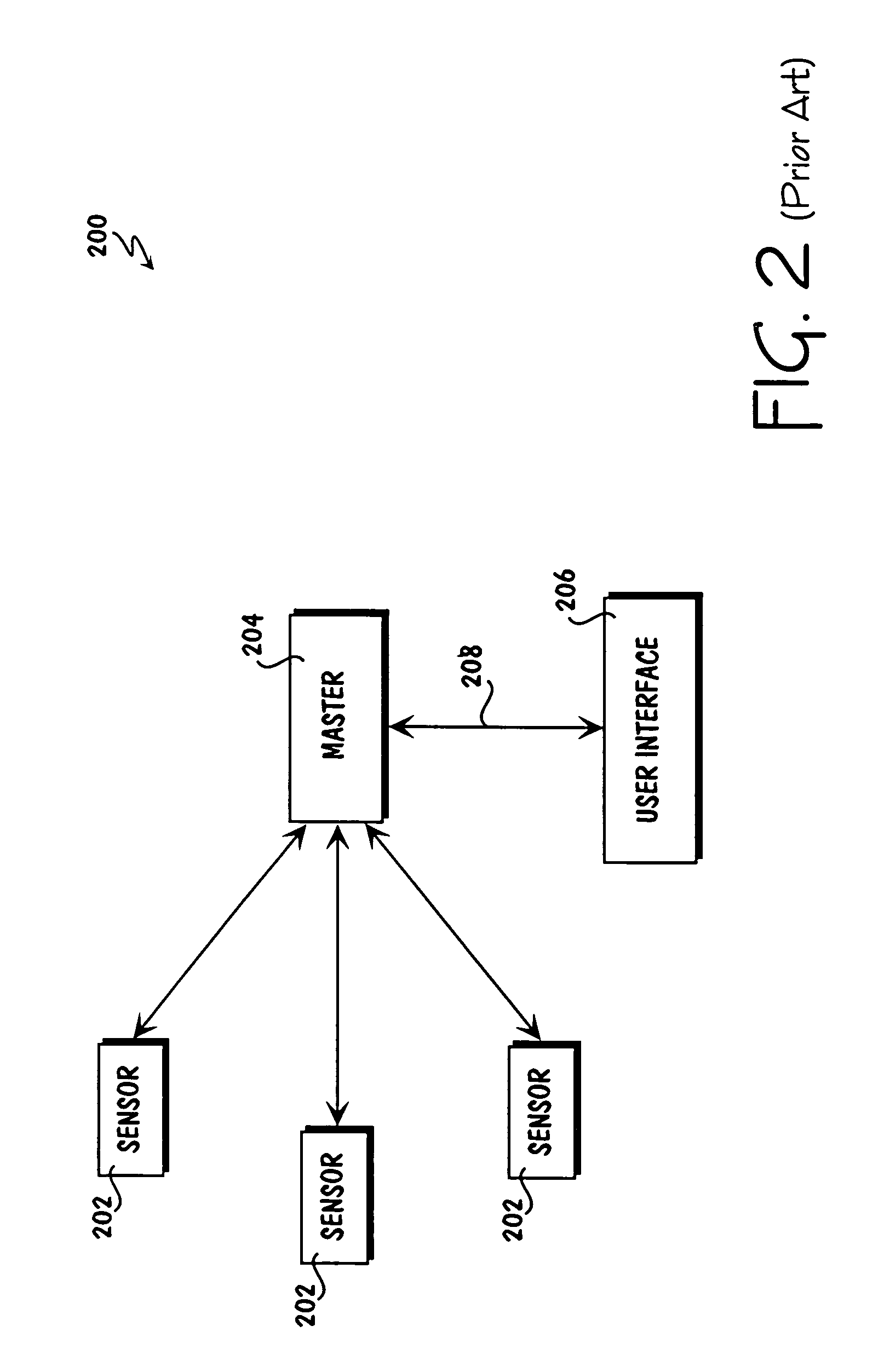Method for collecting and processing data using internetworked wireless integrated network sensors (WINS)
a technology of integrated network and sensor, applied in the field of intelligent networks, can solve the problems of requiring an expensive interface between the computer and the minimum energy path, wasting energy resources, and inflexible, and achieve the effect of simple mechanisms and minimal guard times
- Summary
- Abstract
- Description
- Claims
- Application Information
AI Technical Summary
Benefits of technology
Problems solved by technology
Method used
Image
Examples
Embodiment Construction
The Wireless Integrated Network Sensor Next Generation (WINS NG) Technology
[0081]The Wireless Integrated Network Sensor Next Generation (WINS NG) nodes of an embodiment combine sensing, signal processing, decision capability, and wireless networking capability in a compact, low power system. Recent advances in integrated circuit technology enable construction of far more capable sensors, radios, and processors at low cost, thereby enabling mass production of sophisticated systems that link the physical world to networks. Compact geometry and low cost allows WINS NG to be embedded and distributed at a small fraction of the cost of conventional wireline sensor and actuator systems.
[0082]WINS NG is a fundamental advance for network access to densely and deeply distributed sensing, control, and processing systems. Applications for WINS NG extend from a local scale to a global scale. For example, on a local, wide-area scale, battlefield situational awareness provides personnel health mon...
PUM
 Login to View More
Login to View More Abstract
Description
Claims
Application Information
 Login to View More
Login to View More - R&D
- Intellectual Property
- Life Sciences
- Materials
- Tech Scout
- Unparalleled Data Quality
- Higher Quality Content
- 60% Fewer Hallucinations
Browse by: Latest US Patents, China's latest patents, Technical Efficacy Thesaurus, Application Domain, Technology Topic, Popular Technical Reports.
© 2025 PatSnap. All rights reserved.Legal|Privacy policy|Modern Slavery Act Transparency Statement|Sitemap|About US| Contact US: help@patsnap.com



